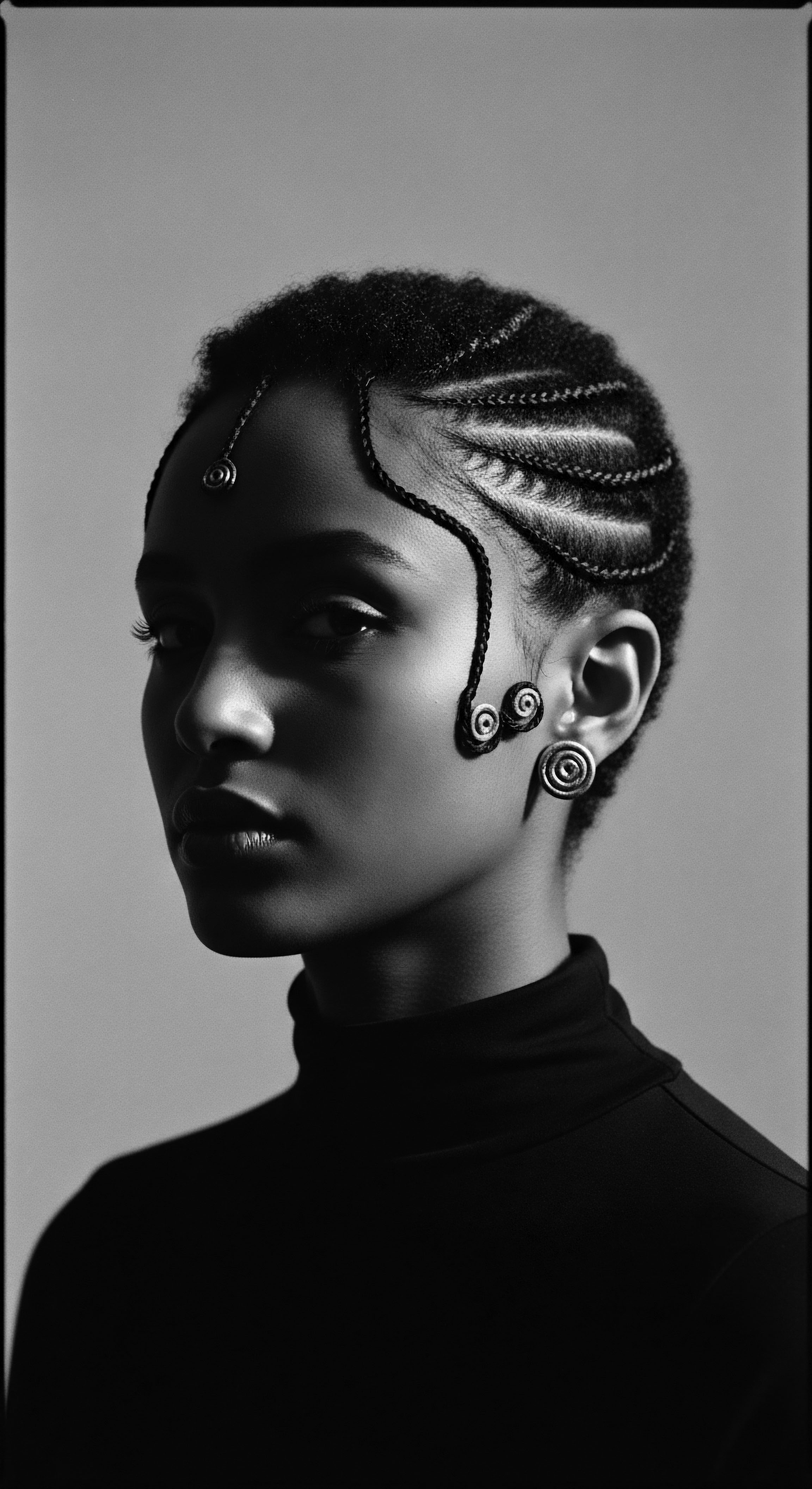
Roots
Consider the deep earth, teeming with life, holding secrets within its mineral embrace. For generations uncounted, long before laboratories and complex formulations, our ancestors looked to the very ground beneath their feet for healing and beauty. This ancient wisdom, especially concerning the care of textured hair, calls to us through the ages. It speaks of a profound kinship with the natural world, a reverence for the elemental substances that shaped life and tradition.
The question is not simply whether ancient clay use can inform modern hair care science for textured hair. Rather, we ponder how the ancestral knowledge, steeped in ritual and sustained by community, continues to whisper truths to our contemporary understanding, particularly for hair that coils, kinks, and waves with its own distinct rhythm.

The Earth’s Gifts A Timeless Connection
Across diverse landscapes, indigenous communities discovered the remarkable properties of various clays. These natural mineral compositions, born from weathered volcanic ash or ancient sedimentary layers, possess qualities that resonate deeply with the needs of textured hair. From the Sahara’s vast expanses to the fertile lands of ancient Kemet, clay was recognized as a cleanser, a purifier, a fortifier.
This recognition was not born from scientific analysis alone, but from observation, inherited wisdom, and an intimate connection to the land. The very act of gathering clay became a practice in itself, a way of acknowledging the earth as a generous provider.
Ancestral wisdom reveals that the earth’s clays were not just substances but living tools for the care of textured hair, embodying a heritage of intuitive knowledge.

Anatomy of a Strand Ancestral Understandings
Textured hair, with its unique helical structure, presents particular requirements for moisture retention and integrity. In ancient times, while microscopes were absent, an innate understanding of hair’s needs existed. Communities observed how certain preparations could soften, detangle, or protect these delicate strands.
They understood, through generations of lived experience, that hair prone to dryness required different nourishment than hair less so. This experiential knowledge often led to the use of substances like clays, which offer distinct benefits.
The hair shaft, a complex protein structure, responds to its environment and the substances applied to it. Modern science now quantifies what ancestors perceived intuitively ❉ the porosity of hair, its elasticity, and its susceptibility to breakage. Clays, with their varied mineral content and absorbent capabilities, interact with these aspects.
For example, the Ghassoul clay from the Atlas Mountains of Morocco, used for centuries, is known for its ability to cleanse gently without stripping natural oils, a benefit particularly pertinent for moisture-loving textured hair. Its unique composition, rich in silica, magnesium, and calcium, allows it to bind impurities while conditioning.

What Constitutes Textured Hair’s Heritage?
The heritage of textured hair is a vibrant, multifaceted continuum, reaching back to the dawn of civilization. Hair, especially in African cultures, has served as a visual language , signifying age, marital status, social rank, and tribal affiliation. Hairstyles were not mere adornments; they were historical records, spiritual declarations, and communal bonds. The care regimens that sustained these styles, including the use of earth elements, were integral to this cultural expression.
- Communal Grooming ❉ Hair care was often a shared activity, fostering connection and the passing down of knowledge, particularly among women. This communal aspect cemented the understanding of hair as a living, cultural artifact.
- Symbolic Meanings ❉ Hair conveyed messages, from a person’s readiness for marriage to their tribal identity. The substances applied to hair, including clays, often carried their own symbolic weight, connecting the individual to the earth and their lineage.
- Resilience and Resistance ❉ During periods of adversity, particularly the transatlantic slave trade, hair became a powerful symbol of defiance and a means of preserving cultural heritage. Traditional hair care practices, even in fragmented forms, persisted as acts of self-affirmation.

Traditional Hair Lexicon and Clay’s Place
Understanding the language used to describe hair and its care across ancestral communities provides a window into their worldview. Terms for different hair textures, styles, and care rituals existed long before modern classification systems. The application of specific clays, often identified by local names, was woven into this lexicon.
For instance, the Himba women of Namibia use a mixture called otjize , a blend of butterfat and red ochre pigment (a type of clay), to protect their hair from the harsh desert climate, simultaneously defining their aesthetic and cultural identity. This practice is not merely cosmetic; it is a shield against the sun and a declaration of belonging, illustrating a deep, functional relationship with earth-derived materials.
The very word ‘clay’ itself, when viewed through a heritage lens, evokes a sense of grounding. It speaks of a time when solutions were sought from the immediate environment. Our ancestors recognized the power in the earth’s bounty, understanding its potential to cleanse, condition, and protect.
Modern science now begins to unravel the molecular intricacies behind these long-held beliefs, revealing the precise mineral compositions that lend clays their efficacy. This fusion of ancient wisdom and contemporary scientific inquiry offers a holistic path for textured hair care, honoring its ancestral roots while pursuing optimal health.

Ritual
From the foundational understanding of hair’s intrinsic structure, our focus shifts to the applied wisdom ❉ the daily rituals, celebratory styling, and protective techniques that shaped hair heritage. The hand that mixed clay with water, the fingers that smoothed it onto coiled strands, those actions were steeped in purpose, far removed from casual adornment. These practices formed a tender thread connecting individuals to community, to history, and to the earth itself. The question of how ancient clay use can inform modern hair care science for textured hair finds its answer not only in mineral composition but in the ceremonial rhythm and cultural context of its application.
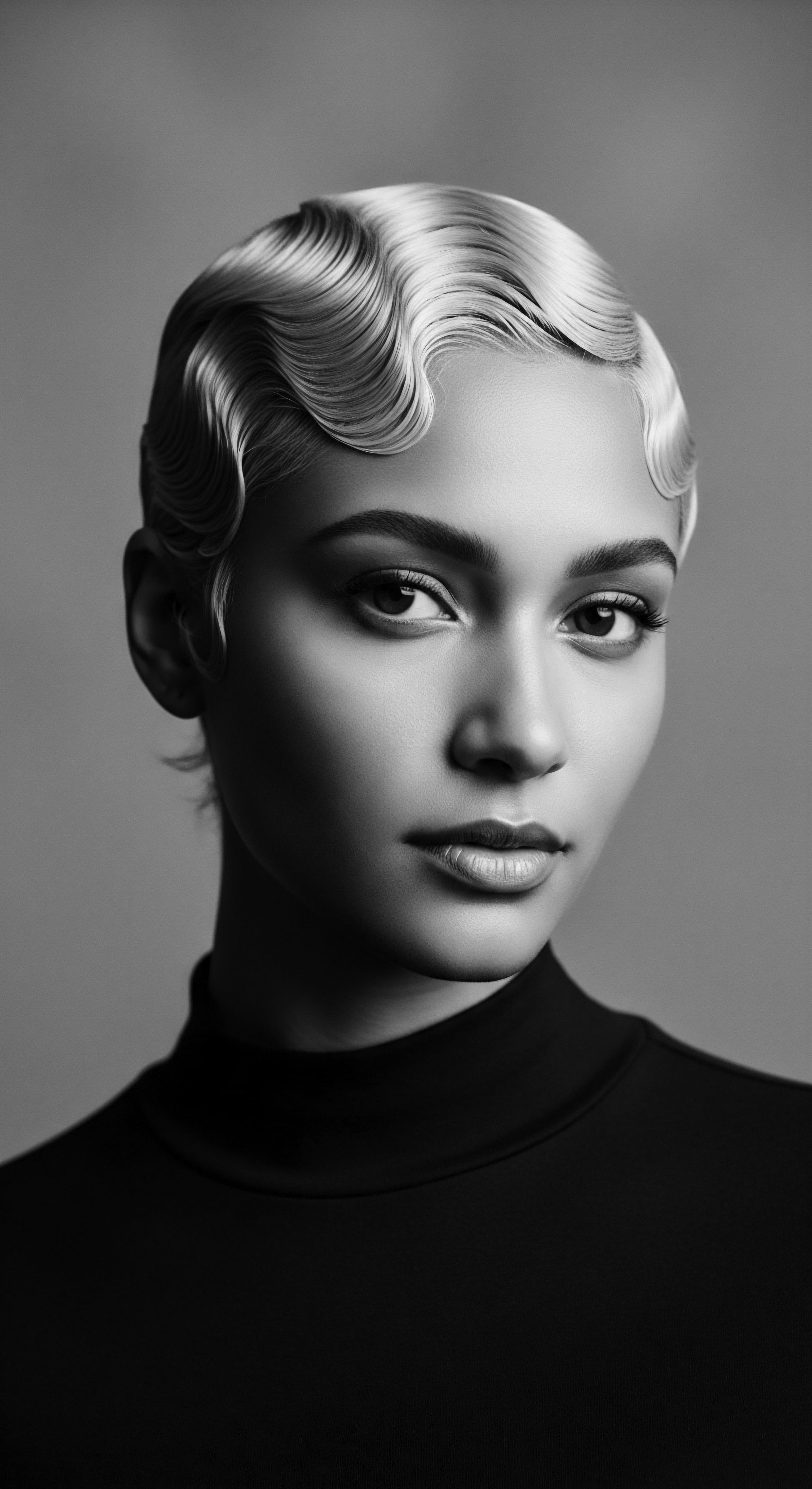
Ancestral Styling Practices and Clay’s Role?
In numerous African societies, hair styling was a significant communal activity, serving as a social occasion where knowledge was shared and bonds strengthened. Clays often played a preparatory or finishing role in these elaborate styles. For example, prior to intricate braiding, a clay mask might have been applied to cleanse and prepare the scalp, perhaps to ensure the longevity of the style or to soothe the scalp.
Consider the Maasai people of Kenya and Tanzania, who traditionally use red ochre (a natural clay pigment) mixed with animal fat to dye their intricate braids. This practice carries profound cultural meaning, symbolizing earth and blood, elements vital to their worldview. Such applications were not solely about appearance; they were about cultural identity, tribal affiliation, and even spiritual connection. The clay assisted in setting and preserving these artistic expressions, acting as a natural fixative while offering protective qualities against environmental elements.
- Pre-Styling Cleanse ❉ Clays provided a gentle, effective way to remove accumulated oils and environmental impurities, preparing hair for complex styling that could last for weeks. This cleansing action minimized build-up and scalp irritation.
- Protective Barrier ❉ When blended with fats or oils, certain clays created a physical barrier on the hair shaft and scalp, shielding against sun, dust, and insects. The otjize used by Himba women serves as a prime example, protecting their intricate plaited designs.
- Structural Support ❉ The fine particulate nature of some clays added grip and volume, aiding in the creation and stability of elaborate styles, particularly for updos or larger braided formations.

Traditional Tools and Clay’s Complement
The implements used in ancient hair care were extensions of the hands, crafted from natural materials that resonated with the holistic approach to beauty. Combs fashioned from bone or wood, natural fiber brushes, and gourds for mixing solutions were common. When clays were employed, special care was taken in their preparation. Clay was often mixed with water, sometimes with herbs or other botanicals, to create a smooth, workable paste.
This deliberate process, often passed down through generations from mother to daughter, ensured the clay’s properties were harnessed effectively. The blending of clay by hand, feeling its texture, gauging its consistency, speaks to a deeply personal and sensory engagement with the care ritual.
| Tool Category Mixing Vessels |
| Traditional Examples Gourds, wooden bowls, pottery |
| Clay Application Connection Used for preparing clay pastes, allowing for specific blends of clay with water or other natural ingredients. |
| Tool Category Application Implements |
| Traditional Examples Fingers, smooth stones, broad leaves |
| Clay Application Connection Utilized for gently spreading clay masks onto hair and scalp, ensuring even coverage without harshness. |
| Tool Category Combs and Picks |
| Traditional Examples Bone combs, wooden picks, natural fiber brushes |
| Clay Application Connection Used after clay treatments to detangle softened hair and distribute natural oils or residual clay for conditioning. |
| Tool Category These ancestral tools, though simple, enhanced the efficacy of clay-based hair care, rooting the practice in natural harmony. |

Natural Styling and Ancestral Definition Techniques
For textured hair, definition and moisture are often key concerns. Long before modern gels and custards, ancestral communities employed natural methods to achieve desired curl patterns and lasting hold. Clays, especially those with absorbent properties, played a part in this.
They could absorb excess sebum without stripping the hair entirely, leaving a clean yet not parched canvas. Bentonite clay, for instance, known for its ability to draw out impurities, also assists in curl definition by removing product build-up that can weigh down strands, allowing the natural coil pattern to emerge more distinctly.
This inherent capability of certain clays aligns with the desires of many seeking natural styling solutions today. The concept of “detoxifying” the hair and scalp, central to modern natural hair movements, finds a clear parallel in ancient clay purification rites. It represents a continuity of philosophy, where cleanliness is not about harsh stripping but about creating an optimal environment for hair to thrive in its natural state.
The enduring power of traditional clay practices lies in their elegant simplicity, offering lessons in both hair integrity and mindful self-care.
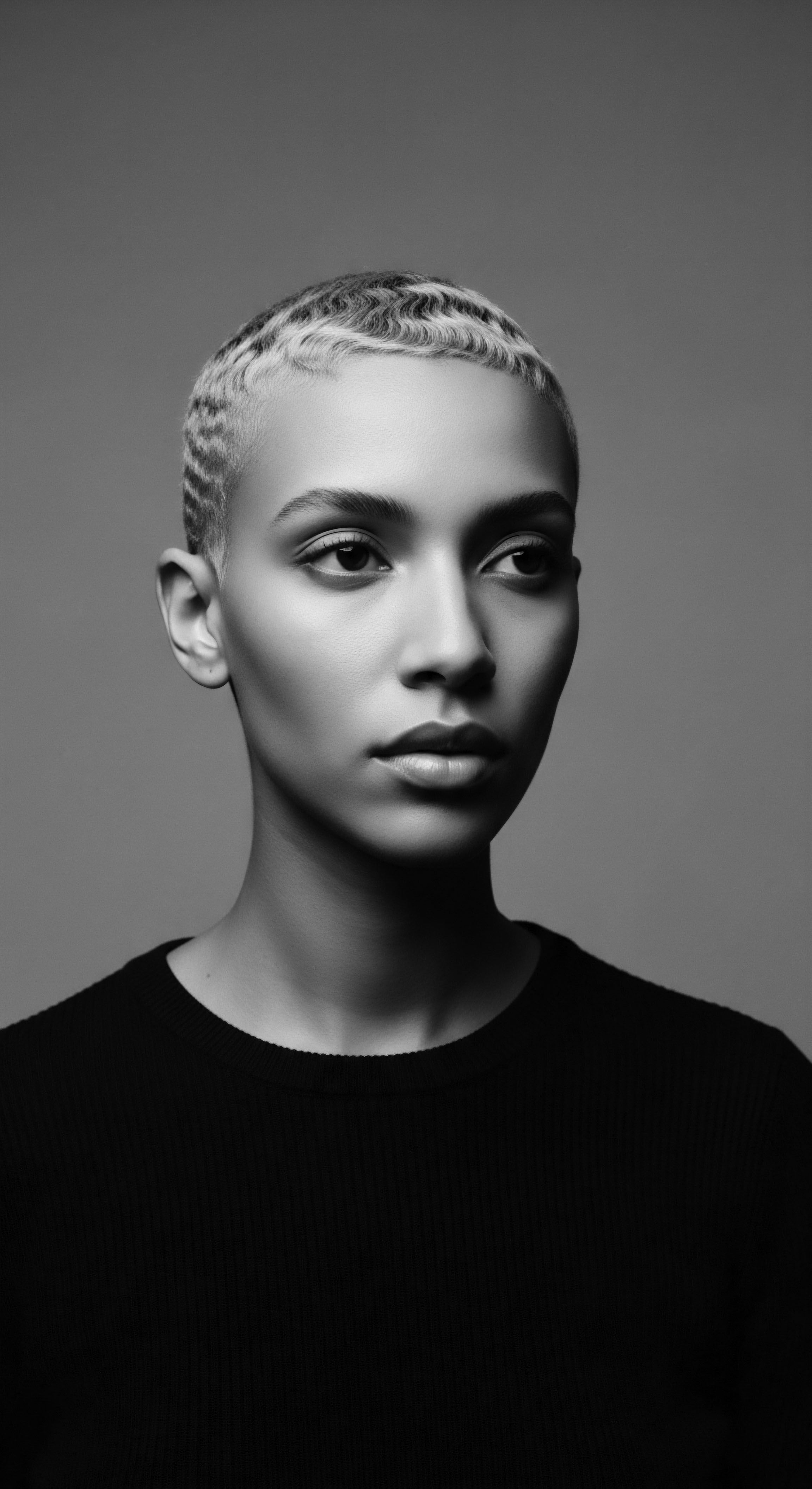
The Echoes in Protective Styling
Protective styles, which safeguard fragile ends and minimize manipulation, have roots deep within African heritage. From elaborate cornrows that could relay coded messages during times of oppression to artistic loc formations, these styles were practical and deeply symbolic. The application of clays often served to enhance the protective qualities of these styles. By coating hair with clay, as seen with the Himba, a natural sealant was created, reducing moisture loss and external damage.
This ancestral practice provides a profound lesson for modern protective styling ❉ the value of adding a physical shield to textured strands, beyond mere moisturizers or sealants. The wisdom of our forebears, who chose clay for its enduring qualities, truly informs contemporary efforts to preserve hair health.

Relay
The journey from ancient earth-bound wisdom to the gleaming surfaces of modern scientific inquiry reveals a remarkable congruence, a relay race of understanding across millennia. The fundamental question, “Can ancient clay use inform modern hair care science for textured hair?”, finds its most compelling answers when we bridge these seemingly disparate worlds. It is here, at the intersection of ancestral knowledge and contemporary research, that a deeper appreciation for textured hair heritage takes root. The complexities of mineral composition, pH balance, and microbial interaction, once understood through observation and generations of trial, are now quantifiable.
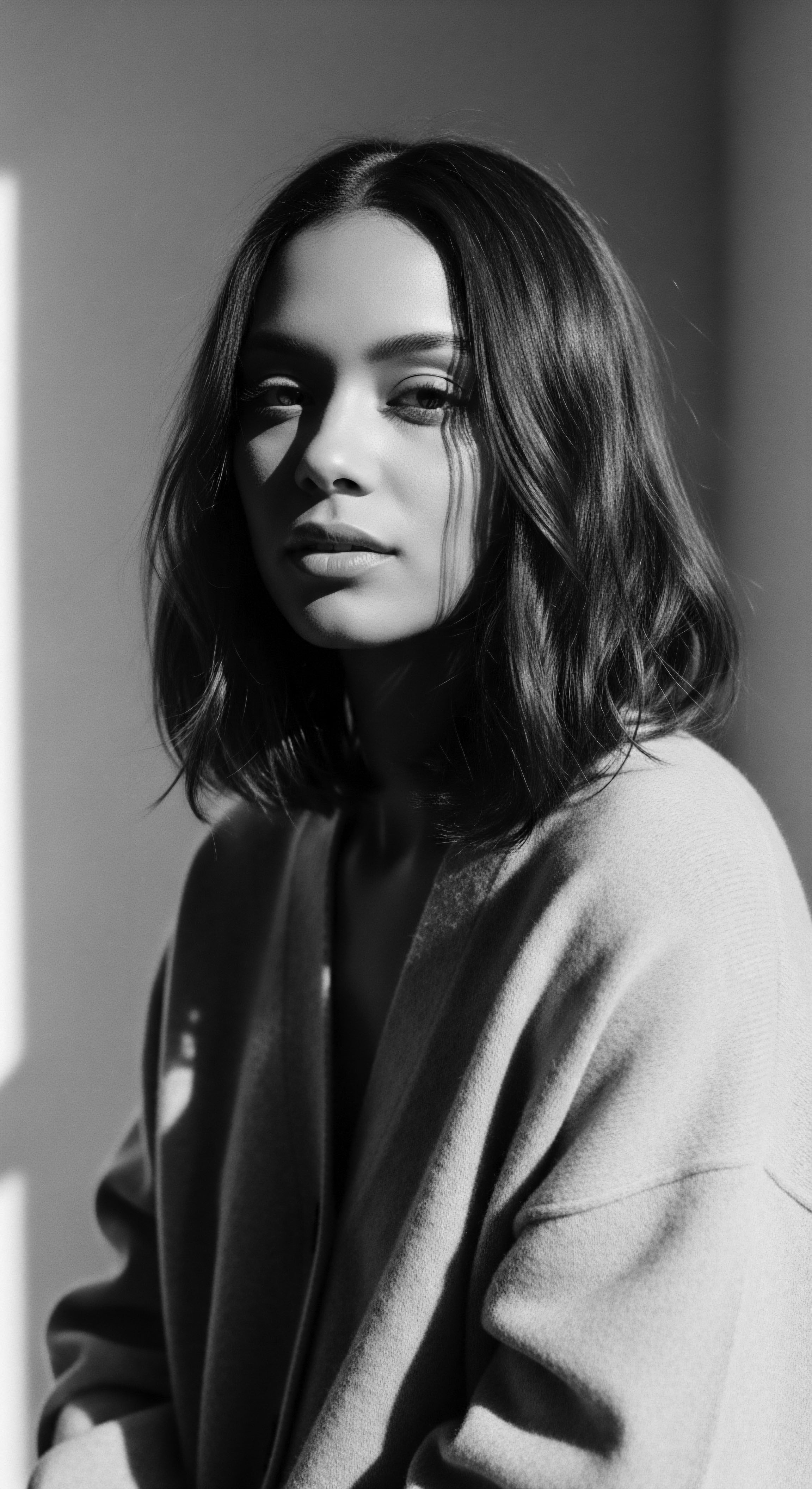
The Mineral Blueprint of Earth’s Bounty?
Different clays possess distinct mineral profiles, which dictate their properties and efficacy. Kaolin clay , often referred to as white clay, is composed primarily of kaolinite and is recognized for its mildness, making it suitable for sensitive scalps. Its ability to gently cleanse and remove impurities without excessive stripping aligns with the delicate nature of many textured hair types.
In contrast, Bentonite clay , derived from volcanic ash, primarily contains montmorillonite and possesses a stronger adsorptive capacity due to its negative charge, drawing out heavy metals, excess sebum, and product build-up. This magnetic quality makes it a potent detoxifier for the scalp and strands.
The Moroccan Ghassoul clay , or Rhassoul clay , stands out for its high mineral content, including silica, magnesium, and calcium. Its unique composition allows it to cleanse, condition, and soften hair, often leaving it silky without the need for additional conditioners. These varied mineral blueprints offer modern science a palette of natural ingredients, each with a specific historical application that can be correlated with modern needs.
| Clay Type Kaolin Clay |
| Primary Minerals Silica, Aluminum, Kaolinite |
| Traditional Use for Hair Gentle cleansing, scalp soothing, light conditioning. Used for delicate or dry scalps. |
| Modern Scientific Correlation Mild absorption, non-stripping cleansing, ideal for sensitive scalps and fine textured hair. Improves elasticity, prevents dandruff. |
| Clay Type Bentonite Clay |
| Primary Minerals Montmorillonite, Calcium, Sodium, Potassium |
| Traditional Use for Hair Deep cleansing, detoxification, curl definition, strengthening. Used for product build-up. |
| Modern Scientific Correlation Strong adsorption of impurities, pH balancing, antimicrobial properties, enhances curl clumping and reduces frizz. |
| Clay Type Ghassoul (Rhassoul) Clay |
| Primary Minerals Silica, Magnesium, Calcium, Potassium, Zinc |
| Traditional Use for Hair Cleansing, conditioning, softening, sebum regulation. Integral to Moroccan hammam rituals. |
| Modern Scientific Correlation High cation-exchange capacity, cleanses without stripping natural oils, conditions, strengthens hair shafts, and soothes scalp. |
| Clay Type The mineral diversity of ancient clays offers a spectrum of benefits, each finding resonance in contemporary hair science and textured hair needs. |

Balancing Acts ❉ PH and Scalp Health?
Scalp health forms the ground for robust hair growth. Maintaining a balanced pH is a cornerstone of modern hair care, preventing issues such as dryness, irritation, or excessive oiliness. Interestingly, many clays possess a slightly alkaline pH when mixed with water, which can help to gently lift dirt and product residue from the hair and scalp, making them effective cleansers. This cleansing action, however, does not always equate to harsh stripping, especially for clays like Ghassoul, which also have conditioning properties.
Modern formulations might then incorporate acidic rinses, such as apple cider vinegar, a practice also observed in certain traditional preparations, to rebalance the pH after cleansing with clay. This interplay between cleansing and balancing reveals a sophisticated ancestral understanding that aligns with contemporary dermatological principles.

The Microbiome and Ancestral Antimicrobials
The burgeoning field of the scalp microbiome highlights the delicate ecosystem of microorganisms that reside on our heads. An imbalance can lead to issues like dandruff or scalp irritation. Many clays, particularly Bentonite clay , exhibit antimicrobial properties, capable of inhibiting the growth of certain fungi and bacteria that contribute to scalp conditions. While ancestors lacked the term “microbiome,” their intuitive use of clays for soothing irritated scalps or addressing flakiness speaks to an empirical understanding of these properties.
One compelling historical example comes from the Himba people of Namibia, whose otjize mixture (butterfat and red ochre clay) offers practical benefits beyond mere aesthetics. This rich, earthy paste not only protects their hair from the intense desert sun and dust but also serves as a hygienic agent due to water scarcity, flaking off over time and carrying away dirt and dead skin. This centuries-old practice demonstrates an ancestral solution to environmental challenges that simultaneously addresses hygiene and scalp health, acting as a natural, self-exfoliating cleanser. (Wallace, 1968, p.
129). This practical application of clay, born of necessity and passed through generations, powerfully illustrates how ancient practices directly addressed issues of scalp cleansing and protection that modern science now categorizes and analyzes at a microbial level.
The profound efficacy of ancestral clay use for textured hair finds its validation in modern scientific insights, revealing a continuum of wisdom.
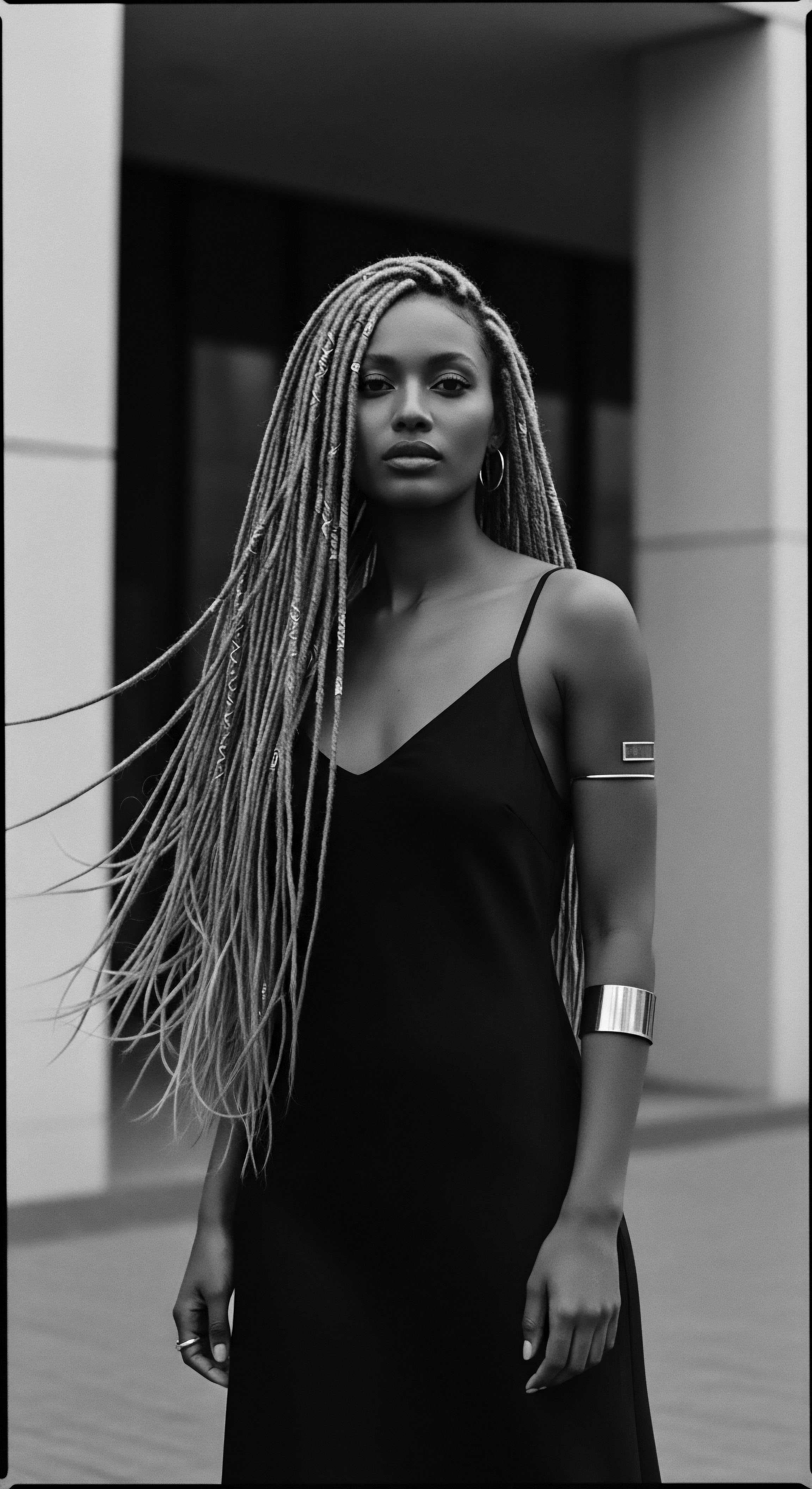
Clay’s Conditioning Capacity
Beyond cleansing, clays offer conditioning benefits. Their mineral content can nourish the hair shaft, and their ability to swell when wet can create a slippery texture, aiding in detangling. Bentonite clay, for example, is noted for its capacity to condition hair, making it softer, more defined, and reducing frizz, particularly beneficial for kinky and coily textures. This aligns with a core need for textured hair ❉ maintaining moisture and reducing friction that leads to breakage.
Modern hair science can now isolate the specific mineral ions responsible for these conditioning effects, allowing for targeted formulations that draw inspiration directly from these ancient earth materials. The legacy of clay in hair care is not simply a historical curiosity; it is a rich data set of efficacy, waiting to be fully appreciated and applied within contemporary hair care science.

Reflection
As we consider the journey of clay from ancient earth to modern hair care, we glimpse a profound continuity. It is a story not just of ingredients, but of people, of heritage, and of an enduring respect for the body’s wisdom. The strands of textured hair, with their unique spiraling grace, carry the echoes of those who first mixed earth with water, those who understood intuitively the earth’s gifts. The collective ‘Soul of a Strand’ beats with this rhythm of deep past and vibrant present.
The inquiry into whether ancient clay use can inform modern hair care science for textured hair finds its answer in the very resilience of cultural practices. It becomes clear that the traditions of our ancestors were not primitive approximations of care, but sophisticated systems finely attuned to the specific needs of textured hair within diverse environments. Modern science, with its capacity for detailed analysis, simply provides the language to articulate what was long known through lived experience.
We are called to listen closely to these ancestral whispers, allowing them to guide our hand in creating solutions that truly honor the heritage of our hair. This is not simply about recreating old recipes; it is about reclaiming a philosophy of care that positions natural elements and ancestral wisdom at the heart of our well-being.

References
- Wallace, W. J. (1968). The Himba of South West Africa. Anthropological Quarterly, 41(3), 125-132.
- Gubitosa, C. et al. (2019). Hair Care Cosmetics ❉ From Traditional Shampoo to Solid Clay and Herbal Shampoo, A Review. Cosmetics, 6(1), 13.
- López-Galindo, A. & Viseras, C. (2004). Pharmaceutical and Cosmetic Applications of Clays. Interface Science and Technology, 1, 267-289.
- Byrd, A. D. & Tharps, L. D. (2001). Hair Story ❉ Untangling the Roots of Black Hair in America. St. Martin’s Press.
- Jacobs-Huey, L. (2006). From the Kitchen to the Parlor ❉ Language and Becoming in African American Women’s Hair Care. Oxford University Press.
- Rautureau, M. et al. (2017). Clay minerals as ingredients in cosmetics. Applied Clay Science, 142, 467-474.
- Zarrouk, A. (2018). Rhassoul Clay ❉ Origin and History. .
- Carretero, M. I. (2002). Clay minerals and their beneficial effects upon human health. Applied Clay Science, 21(3-4), 155-163.
- Ansdell, S. F. (1975). Rhassoul Clay ❉ A Traditional Moroccan Beauty Secret. .
